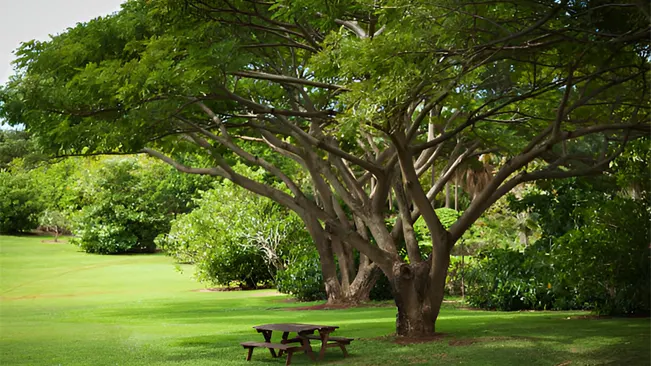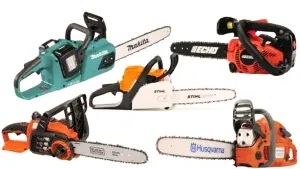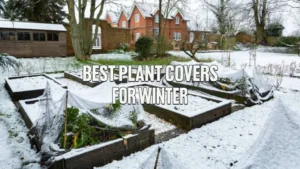Best Shade Trees for 2024
- October 2, 2024
- 0 comment
When it comes to creating a comfortable outdoor space, shade trees play an essential role. But with so many tree species available, how do you choose the best one for shade? This common question arises for homeowners and landscapers alike, especially when trying to create a cooler environment during hot summer months.

The short answer? Trees that provide broad, dense canopies are typically the best for offering shade. However, there are several factors to consider, such as the tree’s growth rate, height, and maintenance needs.
List of Best Shade Trees for 2024
- Oak Trees (Quercus spp.)
- Maple Trees (Acer spp.)
- American Sycamore (Platanus occidentalis)
- Southern Live Oak (Quercus virginiana)
- Weeping Willow (Salix babylonica)
What Makes a Tree Good for Shade?
A good shade tree has a few defining characteristics. First, it must have a wide, dense canopy that can block sunlight effectively. The tree should also grow to a reasonable height tall enough to cast a large shadow, but not so tall that it becomes difficult to maintain. Additionally, trees that are relatively low-maintenance and adapt well to different soil conditions are preferred.
Top Shade Tree Species
Now that we’ve covered the important factors in selecting a shade tree, let’s look at some of the best tree species for providing shade.
1. Oak Trees (Quercus spp.)
Oaks are known for their longevity, strength, and large canopies. Species like the White Oak and Bur Oak are excellent for creating shade in large landscapes.

These trees can live for centuries and provide dense, broad canopies that block sunlight effectively. However, they grow slowly, so they’re best for long-term landscape planning.
- Growth Rate: Slow to moderate
- Canopy Spread: Wide, dense
- Lifespan: 100+ years
2. Maple Trees (Acer spp.)
Maples, particularly the Sugar Maple and Red Maple, are popular shade trees in many regions. They grow relatively quickly and develop broad, dense canopies.

Their vibrant fall colors are an added bonus, making them a favorite for both shade and aesthetics.
- Growth Rate: Moderate to fast
- Canopy Spread: Broad
- Lifespan: 80-100 years
3. American Sycamore (Platanus occidentalis)
This tree is a classic for shade in urban environments. The American Sycamore can grow to impressive heights, reaching 70-100 feet, and its massive canopy provides excellent shade.

It’s particularly suited to wet, well-drained soils and can tolerate urban pollution, making it a top choice for city landscapes.
- Growth Rate: Fast
- Canopy Spread: Very broad
- Lifespan: 100+ years
4. Southern Live Oak (Quercus virginiana)
Native to the southeastern United States, the Southern Live Oak is renowned for its sprawling limbs and dense foliage.

This evergreen tree provides excellent shade year-round and thrives in coastal areas with high humidity. Its iconic shape adds character to landscapes, making it both functional and visually appealing.
- Growth Rate: Moderate
- Canopy Spread: Very broad
- Lifespan: 100+ years
5. Weeping Willow (Salix babylonica)
With its distinctive, drooping branches, the Weeping Willow is a fast-growing tree that provides ample shade in a short amount of time.

It’s ideal for areas near water sources since it thrives in moist soils. While its root system can be aggressive, it’s a beautiful option for those looking to quickly establish shade in larger spaces.
- Growth Rate: Fast
- Canopy Spread: Wide
- Lifespan: 30-50 years
Practical Tips for Choosing and Planting Shade Trees
- Plan for Space: Ensure the tree has enough room to grow. Check the tree’s mature height and width to avoid future problems with overhead wires or neighboring structures.
- Consider Placement: For optimal shade, place the tree on the west or southwest side of your property to block the hot afternoon sun.
- Think Long-Term: While fast-growing trees may be tempting, slower-growing species often provide better quality shade and live longer.
- Watering and Care: Young trees require regular watering during their first few years to establish strong roots. Use mulch around the base to retain moisture and protect the roots.
Conclusion
Choosing the right shade tree can transform your outdoor space, providing relief from the heat and enhancing the beauty of your landscape. Oaks, Maples, Sycamores, and Willows are just a few of the top choices, each with unique benefits and considerations. When selecting a tree, remember to factor in growth rate, maintenance needs, and your local climate to ensure long-term success. With proper planning and care, the right shade tree can become a lasting asset to your home and environment.
Frequently Asked Questions (FAQ)
- What are the fastest-growing trees for shade?
Fast-growing trees like the tulip tree, silver maple, and hybrid poplar can provide shade more quickly than other species. However, they may require more maintenance and might not live as long as slower-growing varieties. - How much space should I leave between my house and a shade tree?
Ideally, shade trees should be planted 15 to 20 feet away from the house to prevent root and structural damage, while still allowing the tree to cast beneficial shade over the home. - Which shade trees are best for small yards?
For smaller yards, trees like the redbud, Japanese maple, or dogwood provide ample shade without taking up too much space, and they are generally easier to maintain. - Are there shade trees that are resistant to disease?
Yes, many modern hybrids, such as disease-resistant elms and some types of maples, are bred to resist common diseases like Dutch Elm Disease and verticillium wilt. - What is the best time of year to plant a shade tree?
The best time to plant a shade tree is typically in the fall or early spring when temperatures are cooler, and the tree has time to establish its roots before the heat of summer or the chill of winter. - How can I ensure my shade tree grows properly?
Proper care includes planting in the right location, regular watering (especially during the first few years), applying mulch to retain moisture, and periodic pruning to remove dead or diseased branches. - Do shade trees affect my home’s energy efficiency?
Yes, planting shade trees in strategic locations (especially on the west or southwest side of your home) can reduce cooling costs by blocking direct sunlight and lowering surrounding temperatures by as much as 10 degrees.

Benjamin Brooks
Forestry AuthorGreetings! I'm Benjamin Brooks, and my journey over the past 15 years has revolved around the fascinating realms of content creation, expertise in snow clearing, and the intricate world of lumberjacking and landscaping. What began as a simple curiosity about the natural world and heavy machinery has evolved into a passionate profession where my love for crafting words intertwines seamlessly with my lumberjacking and garden skills.













Leave your comment